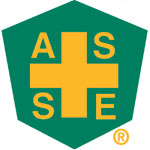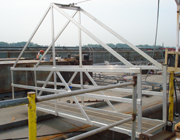Most informed industry professionals are aware that OSHA has emphasized the importance of awareness and compliance to fall protection safety standards that are designed to reduce injury risk and fatalities from falls from heights. What may be less clear to business owners in both construction and general industry is OSHA’s dedication to proactively prosecute violations to the letter of the law. Several recent examples of OSHA’s commitment to fall protection injury prevention have shed light on risk areas for small business owners to be aware of.
OSHA Fall Protection Policy Enforcement
In February this year, OSHA drafted and delivered a warning to the communication tower industry of the increasing fatality rate in that industry, it’s relationship to fall protection, and how strictly OSHA will be enforcing fall protection standards as a result. Another example of OSHA’s firmness on fall protection is in their willingness to prosecute compliance gaps even when a business has taken significant precautions to protect employees. OSHA attempted to prosecute Ryder Transportation Services for an injury to a subcontractor at their site for a fall fatality through a roof skylight that was safely inaccessible to employees.
OSHA Fall Protection Standards
The most important point for concerned business owners in light of OSHA’s increased emphasis on fall protection compliance is their strictness and strategy for standard enforcement. OSHA may potentially cite your business not only for injuries resulting from a failure to provide fall protection, but also in cases where the business did not conduct an appropriate hazard assessment, even at seemingly low-risk heights of 4′. This result is effectively a double whammy effect for a single employee fall incident.
As a result, while it’s important to provide proper fall protection, it’s even more critical to conduct and document the proper precautionary procedures for any potential risk area, to save money and administrative battles in the case that a fall injury does occur. Here’s a brief summary of OSHA’s fall protection standards policy, with this in mind. Of course, anyone subject to OSHA violations should fully research the topic on their own with OSHA or a certified compliance consultant.
Construction Industry Fall Protection Compliance
Found in Section 1926.501, these can generally be summed up to require businesses to provide fall protection (guardrail systems, safety net systems, personal fall arrest systems) on walking or working surfaces with an ‘unprotected side or edge which is six feet or more above the lower‘.
General Industry Fall Protection Compliance
General industry standards are also stringent, with Section 1910.23 stated to include ‘every wall opening from which there is a drop of more than four feet‘, with that also applying to open-side floor or platforms. This requirement stipulates that risk areas be guarded by a standard railing or other means of fall protection.
And remember, the typical fall protection standards citations could be coupled with a citation for Section 1910.132 for failing to conduct a hazard assessment.
Fall Protect Your Business for Compliance
The application of these OSHA standards and enforcement policy strategies can thus be applied to a variety of settings, ranging from loading docks and flatbed truck beds to onsite or offsite machinery and equipment. Business owner/operators should be aware that even for fall hazards of 4′ or less, a hazard assessment must be conducted and fall protection compliance equipment provided.
Trucker® & IAS Custom Access Fall Protection Products
Of course, we at Innovative Access Solutions are well-prepared to help with your flatbed truck and loading dock fall protection, starting with safety engineered Trucker trailer access ladders and working platforms. In addition, IAS has a great deal of experience providing custom fall protection access equipment to machinery/equipment and multi-level walking or working surfaces at manufacturing facilities, dockyards, construction and mining sites, and public/retail settings.
To learn how IAS can design a fall protection access solution for your business, call our engineering team at (800) 388-6884 or submit our Contact form on IAScustom.com.


